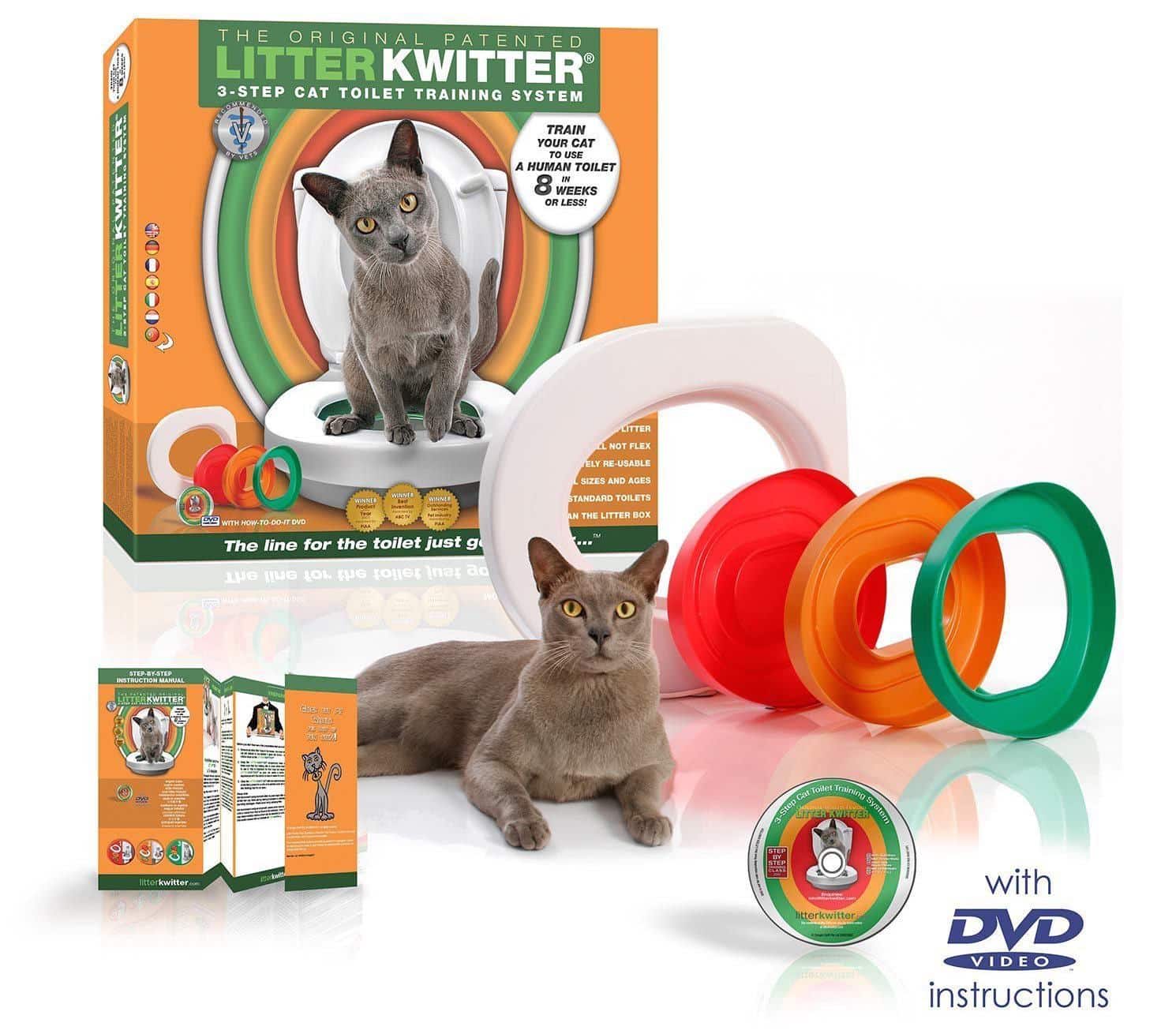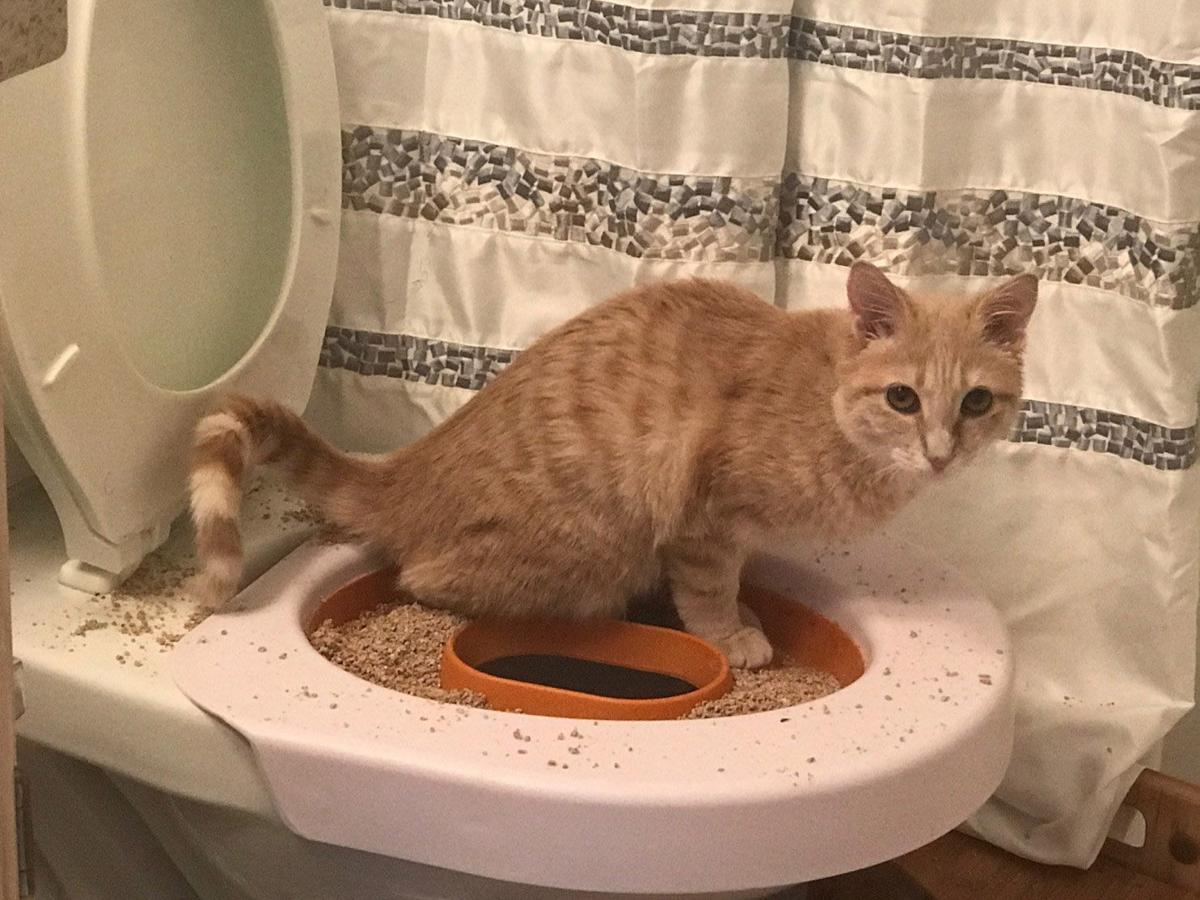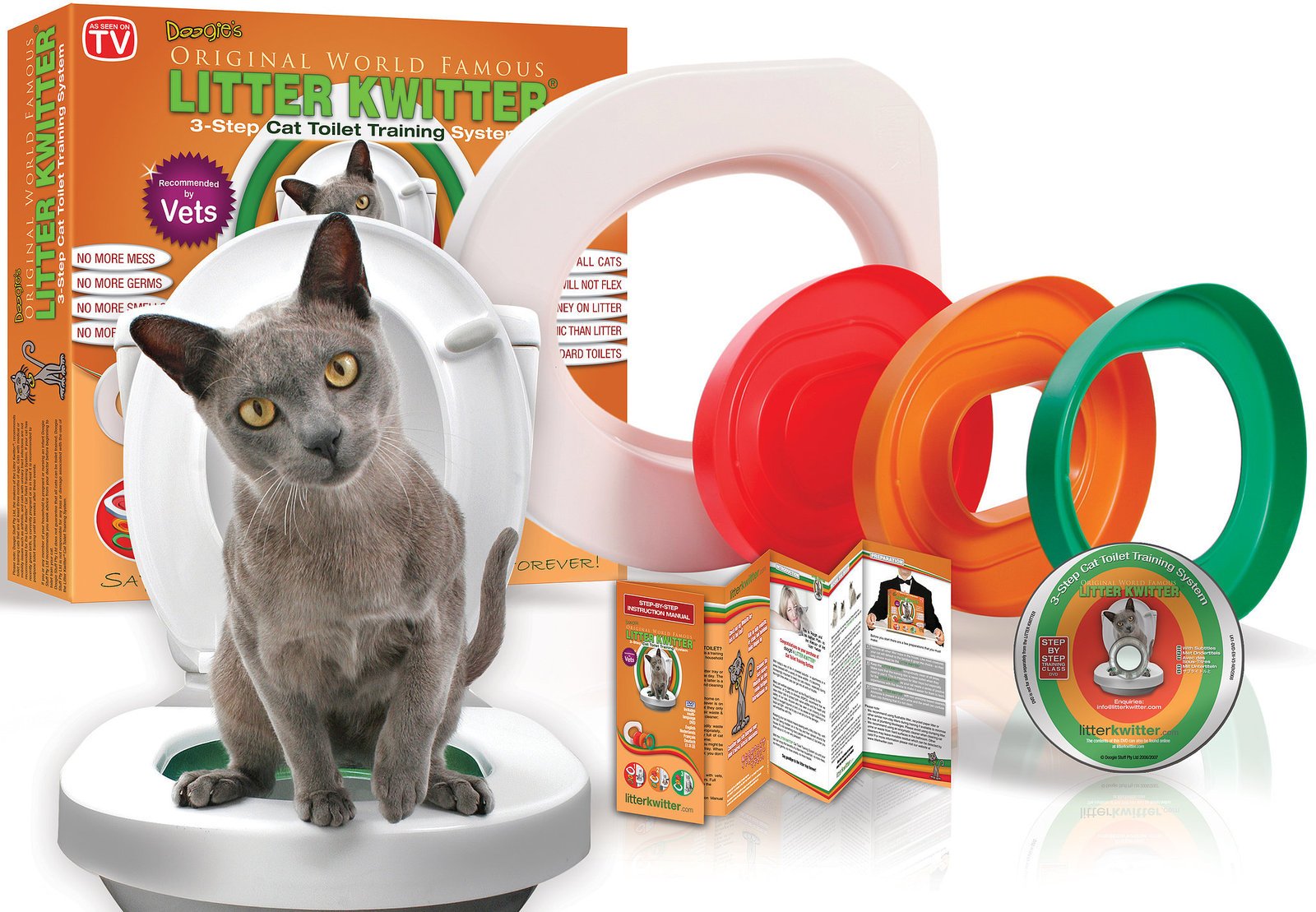Problems Faced During Litter Training And Their Solutions
Though litter train a cat is not that complicated at all, but in rare cases, it can become a serious headache to make the cat use the litter tray. There are several problems that owners can face during the whole process, some of the major ones are discussed below along with their solutions so that if your cat starts to show these problems, you know what to do. Lets have a look at them:
Theres A Real Risk To Wildlife
You may have already heard about toxoplasmosis and while the risk to humans is typically mild, flushing your cats poops could spread the disease to wildlife.
And this isnt just a theory, researchers found that otters off the coast of California were dying from the same strain of toxoplasmosis thats found in cats. The otters were exposed to the disease as a result of cat owners flushing infected poops which eventually made their way to the coast.
While the risk could be lower if your cat only stays indoors, its still far from non-existent and one study found that 74% of cats had latent toxoplasmosis.
Is There Another Way To Solve The Litter Box Problem
Litter box training is popular for a reason.
Its by far the easiest option for potty training your cat and felines will instinctively use the box for bathroom breaks.
On the other hand, outdoor potty training requires a little more work and theres always the risk that it doesnt click right away and your cat decides to make their own bathroom somewhere in the house.
For that reason, potty training without a litter box probably shouldnt be your first option so lets consider a few of the alternative options.
Recommended Reading: Why Is My Cat Acting Strange
The Toilet Isnt Always Easy To Reachor Safe
Older cats or young kittens may not be able to easily reach the toilet. Depending on the layout of your bathroom, a jump to the toilet can require a great deal of precision to pull off and if your cat misses they could end up soaked in toilet water.
Not only is that a bit gross, but it can also be dangerous for cats and especially kittens who may not be able to easily get out of the toilet.
How Often Do I Need To Clean The Litter Box

Most cats are by nature fastidious. Cats spend a lot of time grooming themselves, and naturally prefer a tidy bathroom as well. Consider a human going into a public restroom: if someone before you fails to flush, do you proceed and use the toilet? Doing our best to keep the litter clean and appealing to cats is one of the most important factors in maintaining good elimination habits in our pets.
Every Day: Scoop all clumps. Some cats prefer the litter to be scooped even more frequently.
Every Week: Empty all litter and any residue from;the box, refill with clean litter.
Every Month: Empty all litter and thoroughly scrub the box with hot water and mild soap;before refilling. Some cats prefer this to be done weekly.
Every Year: Completely replace the litter box.
Recommended Reading: What Did Lovecraft Name His Cat
Everything You Need To Litter Train A Cat
All you need to get started is a litter box and cat litter.
For kittens and older cats who may have trouble getting in and out of the litter box, Galaxy suggests getting a low, open-sided litter box, like the KittyGoHere Senior Cat Litter Box. Puppy pans also work well, since they have a low opening.
You can even cut away the front part of a litter box just to make it easier for them, says Galaxy.
When it comes to the type of litter, Galaxy advises pet parents to use the finest litter they can find. The closer to the fineness of sand, the better. . Galaxy also says to avoid using clay litter for kittens.
They are going to try and eat anything they come in contact with, he explains. Due to clay litters rough surface, it may cause your little kitty digestive issues if consumed. For a fine, non-clay-based cat litter, an option to consider is Frisco Natural Grass Cat Litter.
If you live in a multi-cat household, Galaxy uses an easy formula to determine the number of litter boxes one should have in the home: one litter box plus one for every cat. So if you have one cat, you should have two litter boxes. If you have two cats, you should have four litter boxes. And so on.
Three: Location Location Location
Just like they say in business, location is key. The box should be set up in a place that is private.
Cats dont like feeling disturbed and want to feel secure when going to relieve themselves. When picking a spot, find a place that doesnt have people constantly walking by.
Another reason location is important is access. Accessibility is very important.
If your cat cant access the box easily, they just wont use it. In addition to finding a private and convenient area, make sure you dont place the box next to your cats food.
Naturally, cats dont like to relieve themselves next to their food and might not do it if you place their box there.
Also Check: How To Introduce A Kitten To An Older Cat
Litter Box Training Tips
Adopting a cat can be one of the most rewarding and enjoyable experiences life has to offer. Kitties are soft, playful and fiercely loyal to the ones they love. But along with the joys of owning a cat come some minor misfortunes, including dealing with the occasional hairball and having to wake up at the crack of dawn to serve kibble. For most people, this is as bad as it gets with their bewhiskered bedfellows.
Unfortunately, some people have to deal with a cat that cannot or will not use the litter box. Understandably, this is considered a pretty serious problem. The good news, though, is that it’s usually also a fixable one. Most cats are naturally tidy animals with a strong instinct to bury their waste. This makes litter box training a breeze. Assuming, that is, that you take into consideration a few important feline personality quirks. Read on to learn more about five essential litter box training tips for cats.
Training The Cat To Use Litter Box
Once you have gathered all the supplies, half of your work is already done, now you have to potty train a cat. Keep in mind that primarily cats already know how to use a litter box, they just need some confidence and support from you and thats what youre gonna provide them during the training. So to carry out the process you would have to follow these simple steps mentioned below.
You May Like: Why Do Cats Wag Their Tails While Lying Down
Is It Easy To Toilet Train A Cat
It is not difficult to toilet train your pet. It just takes a little discipline, time, and the right equipment. In seven basic steps, well teach you how to toilet train your cat. This toilet training approach will influence your cats actions and help them adjust to using the toilet for you in a friendly manner.
Top Tips For Litter Training
- Always keep your cats trays as clean as possible, as they wont go in a dirty tray.
- Never punish your cat for having an accident. Instead, reward the good behaviour so they see the litter tray as a good thing.
- Experiment with different types of litter and trays if they arent using their trays at first.
- Clean up any accidents straight away to stop them from going in the same place again.
- Keep your cat as stress-free as possible. A stressed cat is more likely to have accidents.
Don’t Miss: What Was Gargamel’s Cat’s Name
How To Litter Box Basics Kitten Older Cats And Stray Or Feral Cats
Contents
Before we get to potty/ toilet training first, we will look at litter box training because cats need to learn to use a litter tray for potty training thus this topic contains some valuable training contents that wont be included in the toilet training issue.
When training cats, its essential to know that the training comes differently for kittens, stray cats, feral cats and older cats. Its easier for younger cats to accept the change of environment but for adult cats, its a bit harder. Fortunately, kittens and cats are naturally fastidious animals;and have a natural tendency to use litter boxes.
Choose A Litter That Is Kitten

Kittens learn and explore in the same way human babies do–with their mouths. This means that you’ll need to choose a litter that is safe for kittens so that they don’t consume something toxic or dangerous. Kittens should not be given litter products that contain fragrances, harsh chemicals, or clumping properties. While clumping litter might be the standard for adult cats, it’s a risk to kittens if ingested, and should not be provided until the kitten is at least 2-3 months old and well accustomed to the litter box.
Instead, opt for a natural, pellet-based litter that is less likely to be inhaled or ingested by a young kitten.;
You May Like: Why Does My Cat Bite My Feet
Choose The Right Placement
Equally important is the placement. Kittens tend to be drawn to corners or other areas away from their main home base, so start by placing the litter box in a corner that is clean from clutter. A puppy pad placed under the box will make clean-up easier, as they can be messy learners.;
When litter training kittens, you want to make it extremely easy for them to find a litter box at all times.;Kittens have a natural drive to cover their waste, and will look for the most convenient space to do so. This means you’ll want to keep them near a box throughout the duration of their transition, and avoid providing any messy areas such as piles of laundry where the kitten might develop bad habits.;Ideally, a 3-8 week old kitten learning to use a box should be confined to one room so that they can easily find the litter box at all times. For older kittens acclimating to a larger space, it’s best to offer multiple options so that the kitten is always within 10 feet of a litter box.;
One Litter Tray Location
If youve set up your cats litter trays in a certain area they arent using, pay attention to where they do go. Try putting a litter tray down where theyve been going to the toilet to encourage them to go in the tray.
Keep a close eye on your cat if they look like they want to go to the toilet. With kittens, place them in or near their tray to encourage them to go to the toilet in there. It may take them a few times to grasp the idea but keep trying.
Recommended Reading: How Many Human Years Do Cats Live
What To Do And What Not To Do When Litter Training Your Cat
Here are some basics but important information while litter box training your cat either kitten, stray, feral or older cat.
Note
The Most Popular Toilet Training Kit
This CitiKitty Cat Toilet Training Kit was first seen on a well-known television show. Say goodbye to the unpleasant task of cleaning out a litter box! It will help you save TONS of money on cat litter. This kit is ideal for all toilet designs and comes with a training seat and insert, an instruction booklet, helpful pointers, and catnip. It is for kittens that are more than three-months-old and cats. The prices vary depending on if you buy a single kit, double kit, etc. This product had over 1800 reviews as of March 28, 2018!
Don’t Miss: Why Is My Cat Scared All Of A Sudden
Three: Put The Litter Box On The Toilet
After the litter box reaches the same height as the toilet, you want to put the box on the actual toilet. During this step, you will need to use a box that isnt so big.
This is to avoid making it hard for your cat to get in and out of the box. The litter box needs to stay on the toilet for several days to get your cat accustomed to it.
If needed, you can use tape to secure the box to the toilet.
Pick The Right Type Of Litter
Research;has shown that most cats prefer fine-grain litters, presumably because they have a softer feel.;
When it comes to clumping or non-clumping litters,;cats have their own preferences. Of course, you might prefer clumping for the ease of scooping.;
In terms of clay litter versus litter made from other materials, some cats wont use a box that has corn- or wheat-based litter because it smells like food, Nagelschneider says.
Try out a few types to make sure you get the type of litter that your kitten prefers.;
Litter box placement and availability can be a critical factor in encouraging your kitten to use the box.
Dont Hide the Litter Boxes
If the boxes are all in the same corner, they are effectively one big box, which can lead to trouble if your kitties don’t want to share.
Its tempting to put litter boxes in closets and corners because we don’t want them to be visible, but this should be avoided. Remember that cats also don’t like to feel cornered or trapped during toilet time.
Theyll also need some sort of light to see and find their boxes, so if theres no ambient light in the place where you keep the litter box, try using a night-light, Nagelschneider says.
Avoid Distractions
Set up your kittens litter box in an area that has few things to distract them from getting down to business.
Place Litter Boxes on Every Floor
The boxes should be spread out, with at least one on every floor of your home.;
Read Also: When Will My Cat Stop Hissing At New Kitten
Keep The Litter Boxes Clean
Try to scoop your kittens litter box after every elimination. You don’t want your kitten developing an aversion to the box during the training process. After scooping, add some clean litter to maintain a litter depth of 2 to 3 inches to give your kitty plenty of room to dig.
Once your kitten is older and uses the litter box consistently, you can scoop daily instead of each time your kitten uses the box.
Periodically empty out all of the litter in each box, clean the boxes, and fill them with clean litter. Most non-scoop litters will have their own recommendations on the label for how frequently they should be changed.
Clumping litters only need to be changed out completely every week or couple of weeks, depending on how many cats you have using the boxes.;
Start With An Appropriate Litter Box

It is instinctual for cats to bury their waste. For this reason, litter box training is usually a piece of cake. If you have a new kitten or adult cat who does not seem inclined to use a litter box, the problem could be the box itself.
A high-sided litter box may be inaccessible for a kitten due to its size. Likewise, older cats may experience difficulty climbing into these boxes due to arthritis or decreased mobility. Sometimes, making the switch to a box with low sides solves the issue. Some cats dislike covered boxes, too. If your finicky feline does not seem to have issues getting in and out of the box, try removing the cover. This simple step could make a huge difference.
Recommended Reading: How To Apply Terramycin For Cats
Training Your Kitten With A Clicker